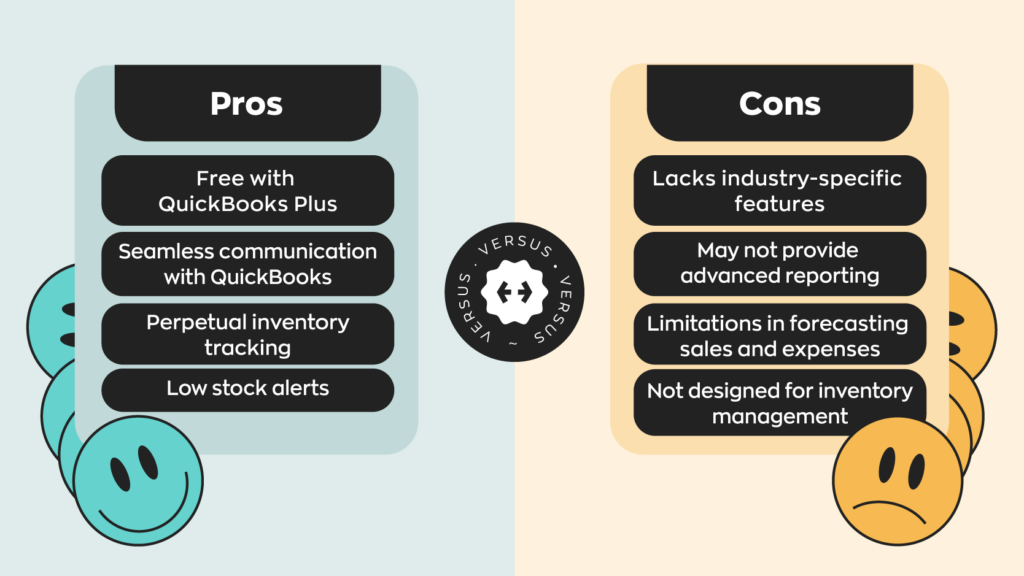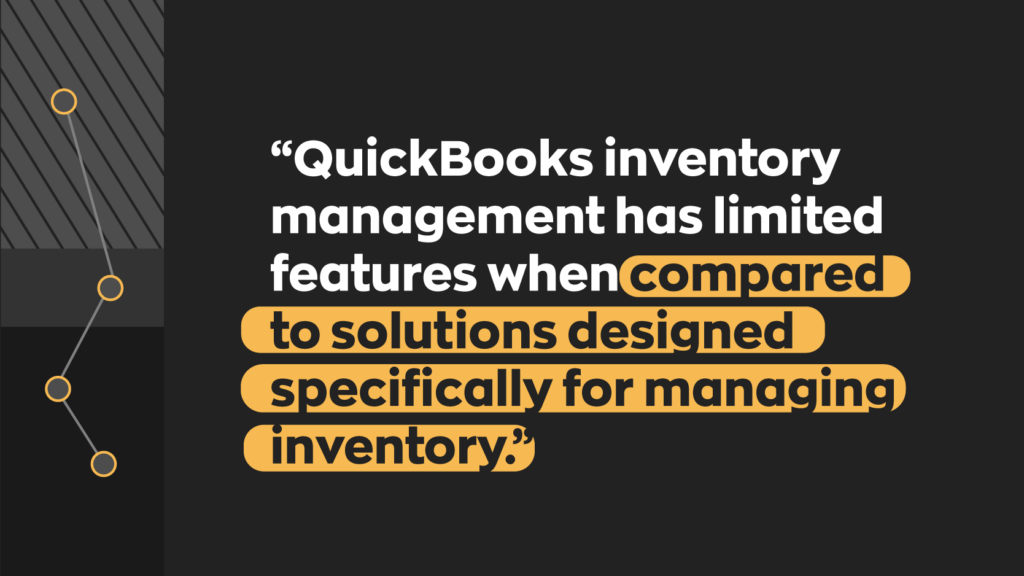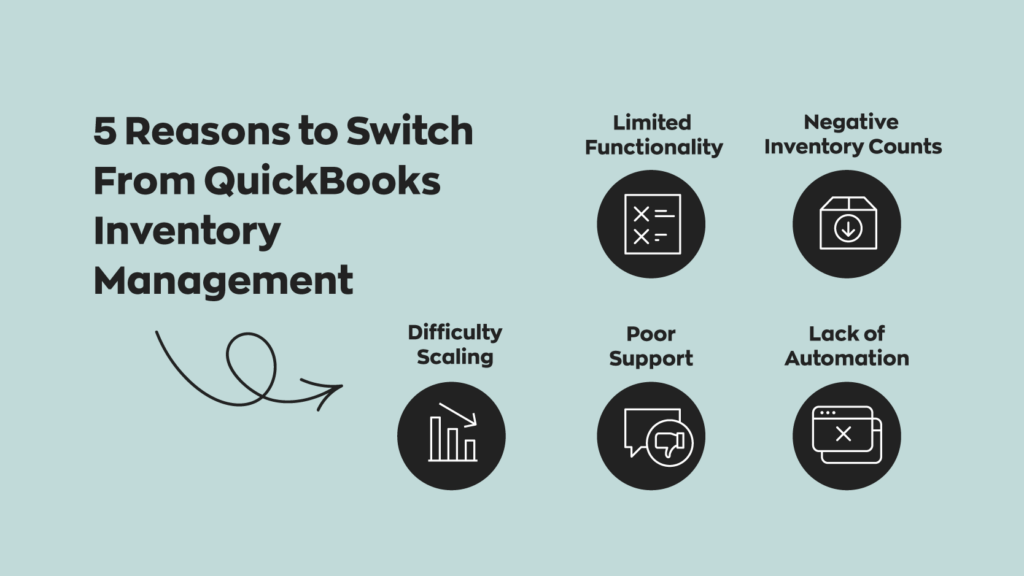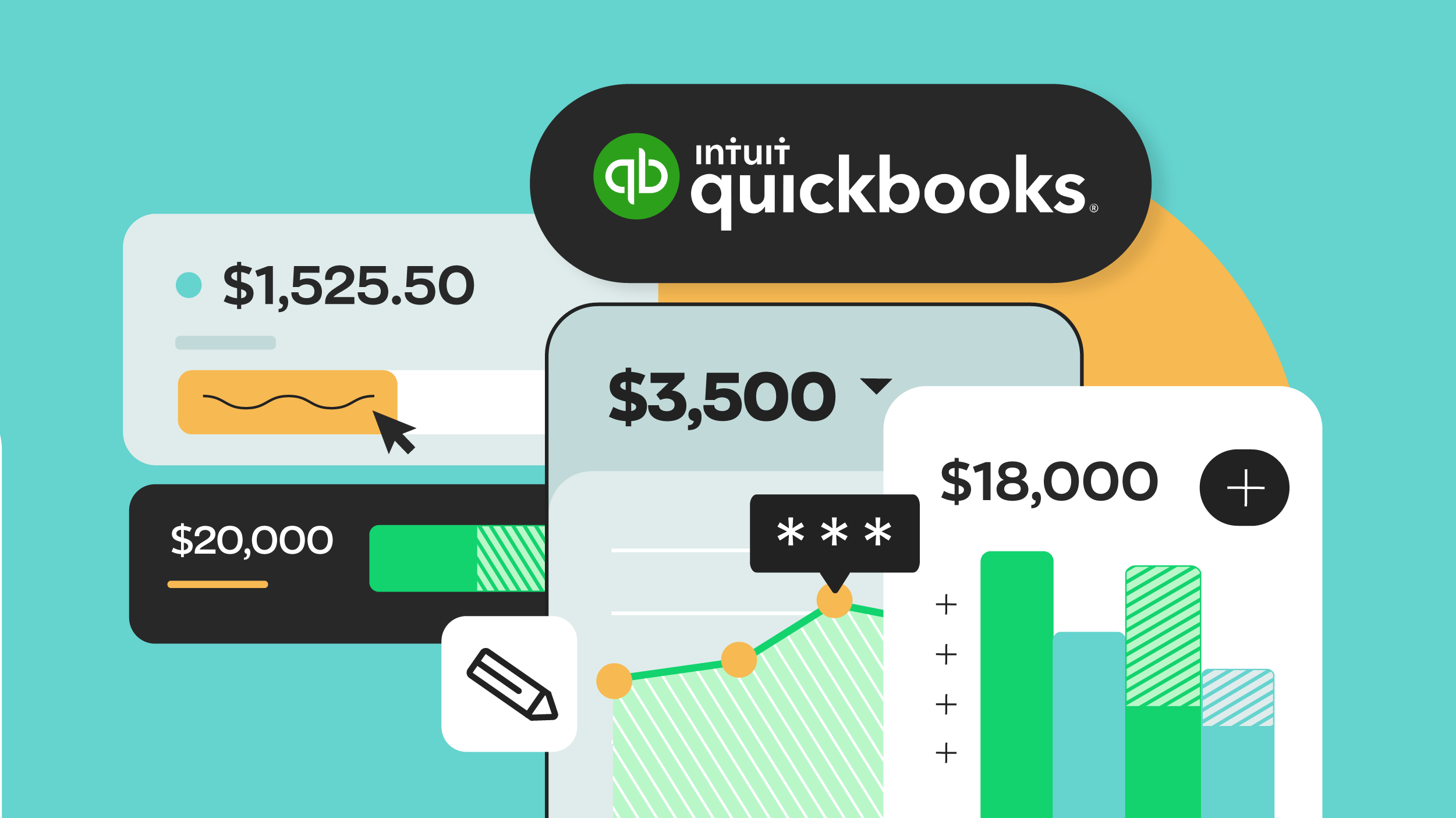Key takeaways
- QuickBooks inventory management provides features like real-time updates and low-stock alerts.
- Tracking inventory with QuickBooks lacks advanced capabilities such as detailed reporting and manufacturing features, which can limit its usefulness to many businesses.
- Growing businesses may find QuickBooks’ inventory management lacking when it comes to more complex inventory tracking needs.
- Integrating QuickBooks Online with specialized inventory software like inFlow enhances functionality with barcode scanning, serial number tracking, and comprehensive reporting.
- This integration helps businesses optimize inventory management while keeping accurate financial records in QuickBooks Online.
With an estimated 80% US market share in 2023, Intuit’s QuickBooks is wildly popular with businesses, and for good reason! Not only does it offer every tool that an accountant needs, it’s also easy to integrate into existing workflows and easy for workers to pick up and use. Intuit also offers features outside of accounting tasks, like QuickBooks inventory management.
Considering this feature comes free with QuickBooks Plus, it’s tempting to take the freebie and stick with it. Why pay more if you can get away with paying less?

Some things to consider are how QuickBooks inventory management functions. Can you properly manage inventory with QuickBooks? What features does QuickBooks inventory tracking offer?
Explaining QuickBooks
QuickBooks is a software as a service (SaaS). If you’re reading this, you probably know what that means, but just in case, here’s a quick rundown.
SaaS companies grant access to the software they design and build in exchange for a regular fee. Usually, the software in question aims to alleviate or solve an existing issue. For example, QuickBooks handles accounting, inFlow (that’s us!) handles inventory management, and Stripe handles payments.
First, we want to mention that we think QuickBooks is great at what it does for accounting purposes! That’s why we created an integration with it (more on that later). On top of the typical accounting tasks, it can generate various reports, automate peripheral tasks, help with invoicing and other finance-related areas.
At the same time, they’re now starting to add more features. This isn’t unique to Intuit, either. More and more companies are adding features in an effort to stand out from the competition.
QuickBooks inventory management is a product of that. Alongside their original accounting product, Intuit now offers an inventory tracking system. But how good is it?
QuickBooks inventory management features
Intuit’s inventory system is competent. On top of being perpetual (meaning it updates in real-time), it can send alerts when stock dips below a certain level. Users can also assign categories and subcategories, making it easier to keep things organized.

That’s about what you can expect from QuickBooks inventory. Considering the fact that it’s essentially a free feature set, it’s surprisingly competent. The cracks start to show once you look at other areas that require a more robust feature set.
Common issues with QuickBooks inventory management
Intuit’s QuickBooks inventory management may be competent, but it’s narrow in its application. This means it’s suitable for tracking what goes into the warehouse and what leaves, but issues start popping up once you introduce more variables.
At the time of writing, the single biggest issue tracking inventory with QuickBooks is the lack of reporting. Some businesses can make do without this feature. For example, businesses with a small sale volume, service-based businesses, and so on, but these are the minority. Reports are a valuable tool in general, so it’s better to have them available when needed.
QuickBooks inventory tracking doesn’t do much to help out with manufacturing, either. That might not sound too bad, but “manufacturing” covers a broader spectrum than you think. If you need to track input and output in real time, there’s a good chance you’ll find yourself needing something better.
It’s also possible for your count to fall into the negatives with QuickBooks inventory. This starts off as a minor issue, but once you start considering balance sheets and other counts, it can quickly create minor ones.
For these reasons, QuickBooks inventory also lacks scalability. It’s a usable solution in some scenarios, but more often than not, it’s better to pair it with another system.
When should you stop tracking inventory with QuickBooks?
While QuickBooks inventory tracking could suffice for some businesses, there’s also a reason that most look elsewhere. Every feature that QuickBooks inventory doesn’t have is a feature that you’ll have to find somewhere else.
For example, remember those reports we mentioned above? You’ll have to crunch the numbers yourself or maybe even get a third party to look at them. That means that either way, you’ll be wasting capital. Still, for some other businesses, maybe doing it like that is cheaper. But if those costs ever exceed the cost of implementing a new system, then it’s a good time to switch.

It’s also worth considering scale. Every business starts small, but growth is usually the ultimate goal. Because tracking inventory with QuickBooks covers a narrow range, it’s not a good long-term solution for businesses looking to scale. It’ll work early on, but adopting a dedicated inventory management system from the start could be better.
There is also merit in adopting a new system to streamline your workflow. This point, in particular, can be challenging to pinpoint, as it requires in-depth knowledge of the existing workflow. At the same time, if you can improve productivity, it’s worth considering the cost.
What features should inventory management software have?
If you’re looking to switch to a dedicated inventory management system, knowing what to look for is important. Needs will vary from business to business, but some things are useful for every industry.
It’s always helpful to have a perpetual inventory system. Having real-time updates available at a moment’s notice is a valuable tool when making decisions. Perpetual systems also reduce the need for regular physical counts, freeing up manpower and capital.
You should also keep an eye out for the amount of integrations available. It might not be something you think about when starting a business, but there’s a lot of software out there. They all save you money somehow, so it’s a good idea to make sure they play nice with each other. Otherwise, you’ll end up slowing down your workflow.
What about inFlow?
We want to reiterate that this is not a hit piece on QuickBooks. They have their product, and we have ours. And QuickBooks is great for the accounting side of your business– so great that we went out of our way to build an integration with them!
inFlow may primarily be an inventory management solution, but we understand how many parts there are to a business. That’s why we’ve developed a ton of integrations, including one with QuickBooks. With inFlow, you’ll be able to push sales data to QuickBooks right away, keeping your financial data accurate at all times. We even offer a two-way payment sync option! This relationship will enable inFlow to handle the inventory management for your business while QuickBooks can take care of the accounting side of things.





0 Comments